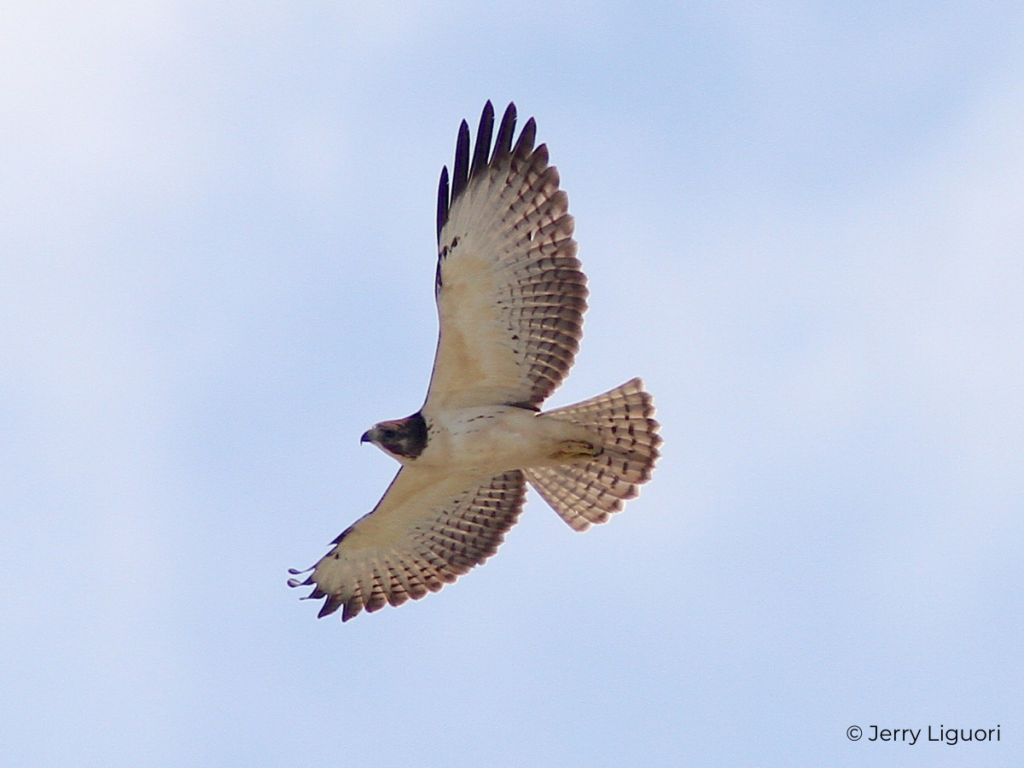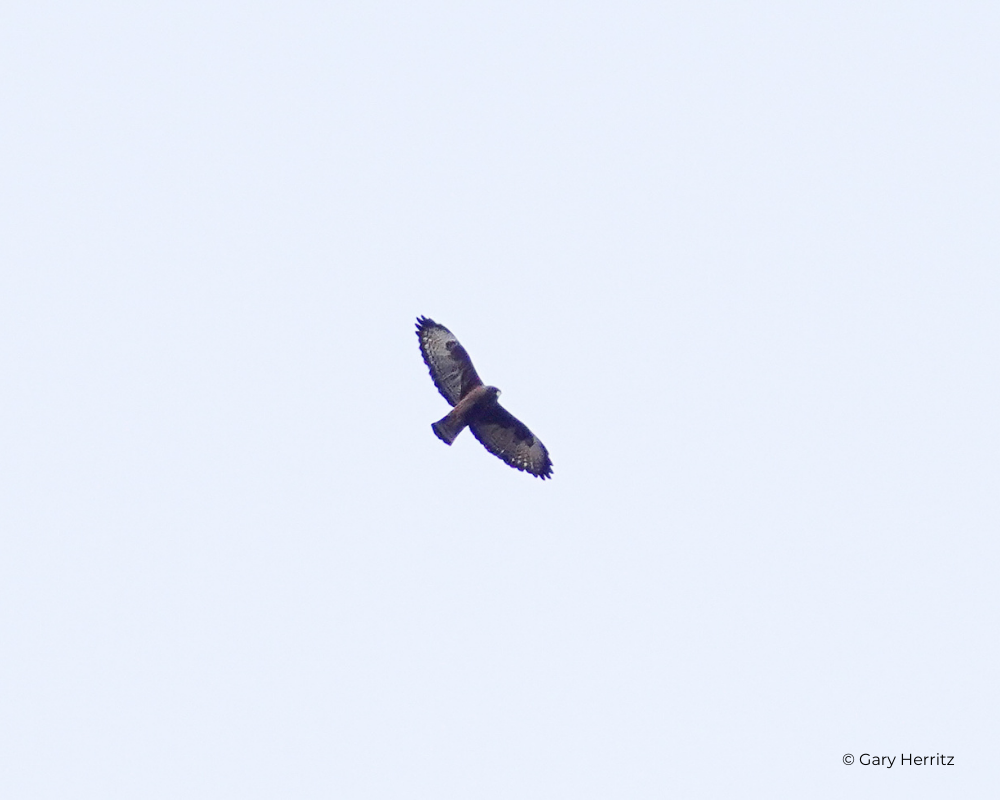Overview
Within the US, the Short-tailed Hawk occurs mainly in Flordia, with a few nesting pairs in southern Arizona. It is a vagrant in south Texas in winter but is widespread throughout Central and South America and found in a variety of habitats there. In Florida, Short-tailed Hawks favor swamps and forests near open spaces. In Arizona, they are found in higher elevations, typically pine forests in “sky islands” in the southeastern corner of the state. Short-tailed Hawks are shy and elusive, rarely seen perched along roadsides, but can be heard during nesting and courtship with their drawn-out “keeeer” call. They are highly aerial and most visible when kiting above, searching for their main prey: birds, rodents, and reptiles that are captured from spectacular ariel swoops.
The Short-tailed Hawk is most often confused with the Broad-winged Hawk, which shares a similar shape and size. When seen well, the difference becomes clearer; notably, the Short-tailed Hawk’s grayish flight feathers on both light and dark-morph birds and more bulging secondaries. Behavioral differences are also key: Broad-winged Hawks often perch along the forest edge or on roadside wires, while Short-tailed Hawks are rarely seen perched. Broad-winged Hawks never kite motionless in the air, whereas Short-tailed Hawks do this habitually,




